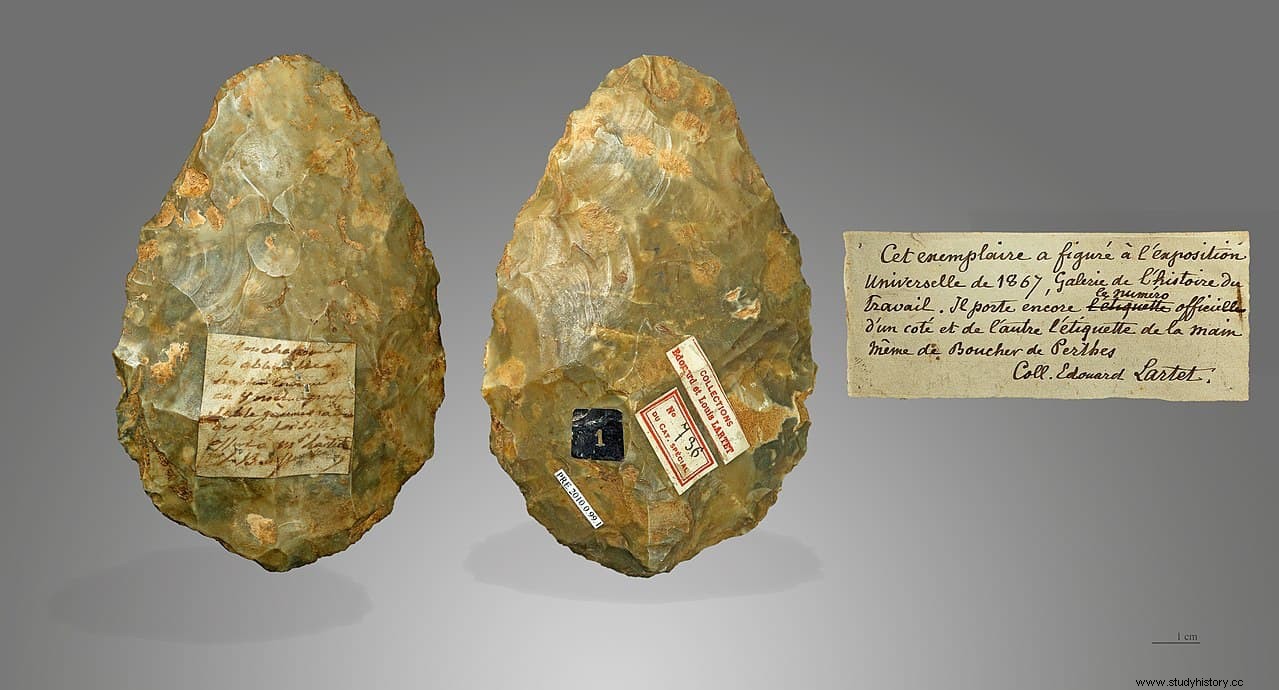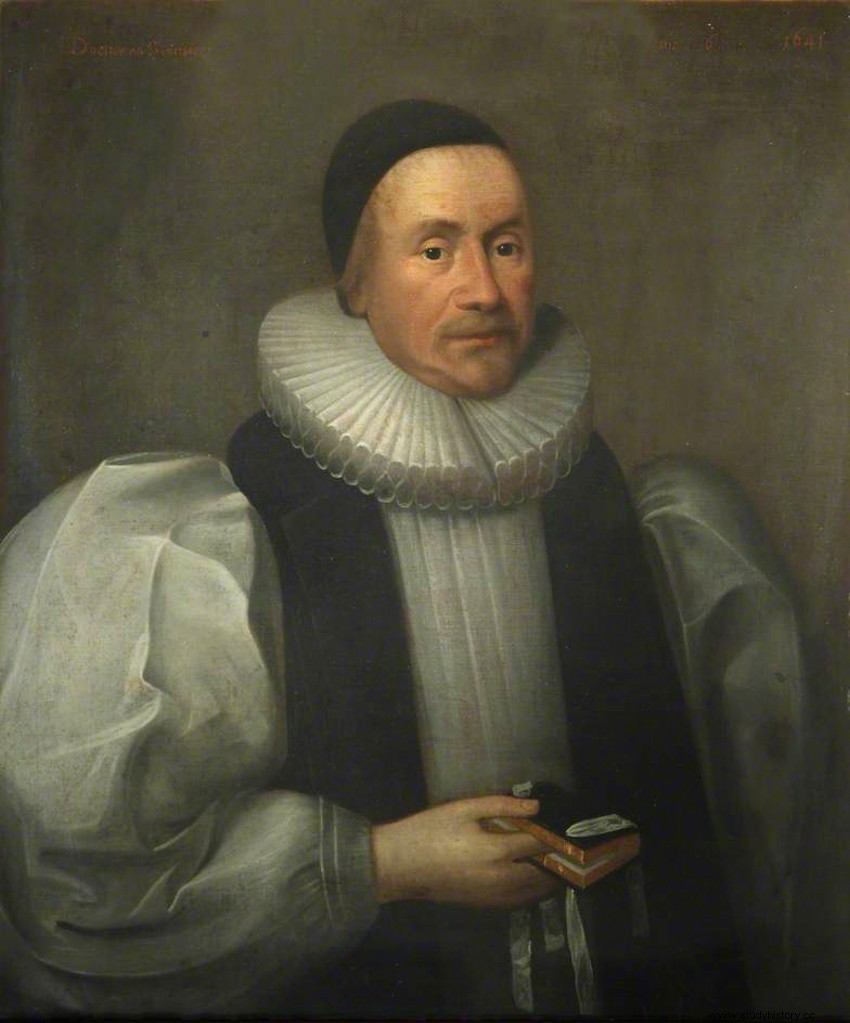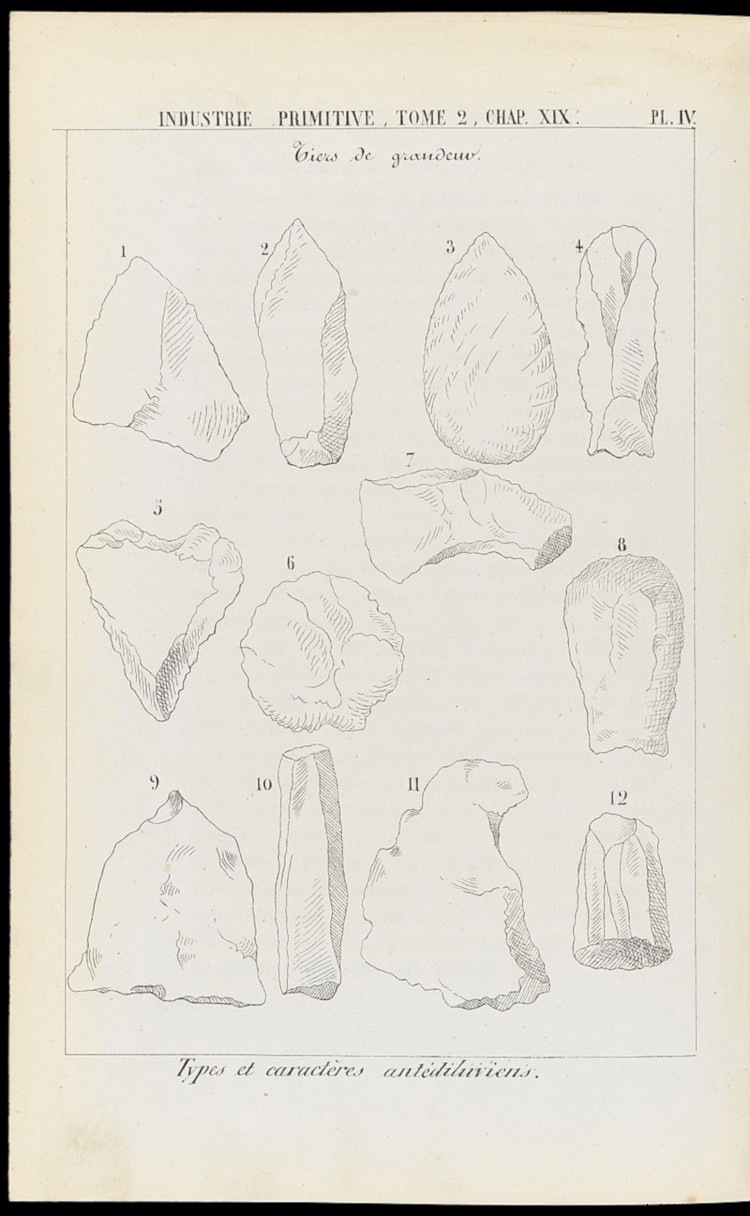The publication of The Origin of Species in 1859 he revolutionized the scientific world and gave a radical turn to the concepts about the past of Man.
Although it has been the name of its author, Charles Darwin , the one who has permeated the popular mentality, was not really the only researcher who dealt with the subject of human evolution. Scottish geologist Charles Lyell he had developed a similar proposal in a parallel way exposed in his work Principles of geology and Darwin himself recognized the influence that this book had had on him, which he read during his famous voyage aboard theHMS Beagle .
In turn, Lyell had been inspired by the Theory of the Earth of the illustrated James Hutton (also Scottish, by the way), which raised the first evolutionary proposal and even the possibility of natural selection as a mechanism of its operation. The French naturalist Jean-Baptiste Lamarck he was another of the pioneers of evolutionism, although he raised its development in an erroneous way.

The differential nuance of Darwin and Lyell was that they dared toinclude Man in the scheme of evolution, which implied not only the postponement of direct creation by a divine hand, but also definitively shattered the theory of the immutability of species and, therefore, it radically changed the history of the world by not adjusting it to the chronology accepted at the time, that of the Bible.
However, in this aspect there were also precursors and one of the most important was the French Jacques Boucher de Crèvecœur de Perthes , who is considered the father of Prehistory (understood as the discipline that studies this period), since he questioned that biblical timing thirteen years before Darwin and for that implacable criticism rained down on him, being accused of heresy. Time would prove him right.
Boucher de Perthes was born in the Ardennes region in 1788 into an aristocratic family , being the eldest of seven children and living a childhood of indefatigable activity and physical games that prevailed over studies, for which he was always lazy. In the long run, this caused his father to take him out of the boarding school where he was and force him to go to work, joining the Customs Corps in 1802.; In carrying out this function, he spent six years in Naples and Marseille, receiving the office of lieutenant and then going to Livorno and Foligno, here as sub-inspector.
His stay in Italy helped him become a violin virtuoso and take his first literary steps playing all genres (novel, poetry, theater...). In 1811 he returned to his country and was appointed inspector of Boulogne first, and director in Paris the following year.
Later, in 1825, he succeeded his father as head of the Abbeville customs office. . By then he had already published several books and could even boast of affairs with the very Paulina Borghese she, the wayward sister of Napoleon, famous not only for her surname and collection of lovers but also for the scandal of having posed nude for the sculptor Canova, who immortalized her in marble as Venus victorious. Apparently, Boucher de Perthes was not far behind in romantic adventures. The fact is that twenty years after his departure, he returned to his native land, from which he would no longer move.
Moreover, although new promotions and promotions came to him, he rejected them all because by then he had discovered what his true passion was: botany , which he had been reconciling all that time with his profession to the point of having written some work on the subject and getting entry into the Academy of Sciences and other European scientific societies.
However, the study of plants took him further than he probably thought at first, as he began to focus his attention on geology , in part thanks to the friendship he struck up with a prehistorian named Casimir Picard , with whom he worked in the organization of a local museum in Abbeville while he began to publish an ambitious work in five volumes (between 1828 and 1841) entitled The Creation, in which a clear influence of the prestigious naturalist Georges Cuvier .

The great attraction of the geologists of the time were the fossils that, if until then they had gone rather unnoticed, since a few decades ago and especially in the first half of the 19th century they began to be collected as an interesting object of study. The English antiquarian John Frere He had taken a first step collecting many pieces in the south of his country and Boucher de Perthes did not shy away from fashion:in 1828 he found a couple of flint flakes in an alluvial ravine in Abbeville. They seemed deliberately carved. The geological context indicated that its dating had to be antediluvian but chose not to publicly reveal the discovery of it.
However, in 1844 he again found important pieces on a terrace of the Somme:stone tools along with bones of large extinct mammals (specifically an elephant and a rhinoceros); too much to remain silent.
Thus, in the following years he published the three volumes of his Antiquités celtiques et antédiluviennes (Celtic and antediluvian antiquities), in which he reviewed his findings and proposed the presence of the human being in the Pleistocene , taking into account the context of the site.

This meant that Man would be on Earth much earlier than estimated in the biblical chronology calculated by the Anglican bishop James Ussher in his book Annalis veteris testamenti (1650), according to which, taking into account the characters that appeared in the Holy Scriptures, counting the number of generations that have elapsed and considering the average length of human life, our presence dated back to year 4004 BC (specifically Saturday, October 22 at 6:00 p.m., although it sounds like a joke).
Boucher de Perthes's intrusion into the subject was scandalous because the prelate's work was so esteemed that it was undisputed and was often included in British editions of the Bible. Against this, that new thesis appeared, which achieved special resonance as a result of a conference given by its author in 1860 in which he stated that an obvious climate change had occurred. in the world (hence the discovery of skeletons of equatorial fauna in France and the alternation of tropical geological strata with other polar and temperate ones) and, most seriously, it put on the table the existence of an antediluvian man contemporary of those animals; the expression was his, although he was not an evolutionist.

Boucher de Perthes finally dared to publicize his discoveries thanks to the publication of The Origin of Species (paradoxically Darwin never valued him) and the support of some scientists international experts he consulted throughout those years (during which he had left his job to devote himself exclusively to research), such as Marcel Jérôme Rigollot, Hugh Falconer, Joseph Prestwich, John Evans, Robert Godwin-Austen, John Wickham Flower, Albert Gaudry, Armand de Quatrefages and Edouard Lartet or the aforementioned Charles Lyell. Others tried to ridicule him , case of the geologist Leonce Elie de Beaumont or even the Academy of Sciences itself, because they considered that the evidence of him (the carved flint flakes) were nothing more than stones.
Part of the loss of prestige he suffered was due to the affaire of the Moulin-Quignon jaw :a jawbone that one of his workers found in 1863 in a stratum near Abbeville and that was identified as belonging to one of those antediluvian men as it appeared associated with stone tools, but which turned out to be a fraud devised by the pawn to collect the reward offered for the discovery of human fossils.
Indirectly, the deception served to exercise extreme caution and systematic analysis by the scientific community in the face of new discoveries. But Boucher did it hurt , as did his amateur fantasy by interpreting some notches as inscriptions or the lack of specificity of a chronology for his hypothesis (something very difficult to do due to the scarcity of remains and the absence of references).
The fact is that in the following years animal remains and carved objects continued to be removed, such as the mammoth tusk from La Madeleine in 1864 or the elephant skeleton from Solutr in 1866, showing that Boucher de Perthes was not so far off the mark. Today we know that the area he excavated in the Somme was inhabited by Neanderthals and Homo erectus , which places the required chronology between medium and a million years about. Science finally prevailed but he barely had time to enjoy that recognition because he died in 1868.
Fonts
Bulletin of History and Archeology:Boucher de Perthes and the Discovery of Human Antiquity / History of anthropology (Manuel María Marzal) / Brief history of the Neanderthals (Fernando Diez Martín) / History of ethnology (Angel Palerm) / Antiquités Celtiques et Antédiluviennes (Jacques Boucher de Perthes) (in English) / Wikipedia.
